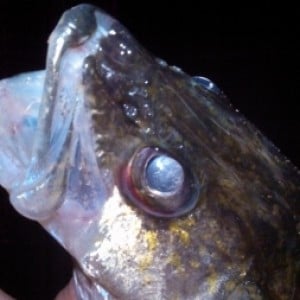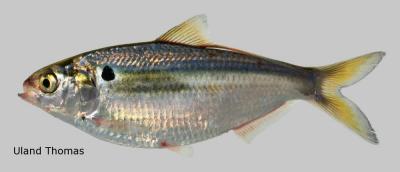I’ve been doing a ton of stewing on why the size structure of walleye in Wisconsin is sooooo skewed towards small fish, sure some fish are taken by rod and reel, spearing, and predation but lower population densities should result in more large fish, spawning conditions haven’t been the greatest, and state agencies are strapped for cash so over harvest is hard to enforce, BUT some how there are still massive quantities of small fish in both general reg (5 over 15) and slot (under 14 over 18, 15-20 or over 28) areas so with varying regs and the same results what else could factor in, possibly habitat, I don’t think so personally fish are extremely adaptive, as of right now current practice seems to be add cribs, stock fingerlings, take surveys and wonder why nothing’s changing, key element missing… forage, big greasy fatty forage, the outstanding big fish waters all seem to contain ciscos but they aren’t for every lake and the ones that suffer most seem to be the large reservoirs and river systems (miss and lower wisco not included), why not bring in the shad, growth rates where shad are present are phenomenal with 4 yr old fish hitting 14-16 inches which translates into more spawners quicker and better fish for the table, how bout we get one just one introduction of a species that actually works for us, and please WDNR can a brotha get some forage
IDO » Forums » Fishing Forums » General Discussion Forum » Can a brotha get some forage
Can a brotha get some forage
-
March 27, 2013 at 1:14 am #1156457
I have thought that same thing to myself! The forage on the lake I was walleye fishing this ice season were little crappies. Not exactly the fatty forage they need. But then again they were mighty tasty without all that oily baitfish taste!
March 27, 2013 at 3:09 am #1156478from my limited WI walleye fishing over the years I agree with your findings.. been on a number of walleye lakes over the years in WI and many seem to be shallow and dark water or just dark water.. most of the clear water systems I have been on have been managed for musky..
IM sure there are some fantastic lakes for walleyes in WI I have just not found one yet… \
Mn has many many lakes managed for walleyes and a lot of them just don’t produce big fish..
each lake is different in what it has to offer for fish.. some simply just aren’t cut out for walleyes..
Instead of asking for forage maybe ask to manage the lakes for what they can best support…
just because everyone likes to catch walleyes don’t mean the lake in your backyard is right for Te fish!
this day and age there is plenty of information on about every body of water..
use the best science and info available to make the best decision for the lake..
I personally don’t know the answer but this is the way i would approach the problem if it were mine to fix!
bottom line some people wont be happy some will!
March 27, 2013 at 9:30 am #1156484There are a number of lakes of which walleyes were not native. I’m sure there is a good reason for that. Stocking efforts, man made spawning habitat, and so on has proven in many cases that it’s hard to re-direct mother nature.
Not saying that YOU are fishing in the wrong places, but I have seen this on a few bodies of water. Guys catch a lot of dink eyes on isolated weeds or particular break lines. But only a few guys have tapped into the masses of suspended walleyes. Lake Geneva is a good example of this. Many people think that its a great bass/pike lake and that there isn’t that strong of a walleye population in there. There is a crap load of 6 to 10# eyes in that lake. Their feeding patterns are generally 1-4 am in shallow water (under 20fow). Yet, 99% of the guys that fish eyes in that lake only get the weedline dinks. I agree that isn’t the case on all lakes.
Lake Mendota in madison is clearly a lake that lacks forage. Back when I first starting fishing it, ciscos were greater than just present. They did a massive stocking effort there and the results were awefull.
Harvest level IMO are one of the hardest elements affecting population and size in lakes that have the carrying capacity. Many people don’t realize the number of man-hours that are spent on most lakes. This is especially true of lakes closer to metro areas or popular destination lakes. When looking at survey information, I look at population density estimates. If a lake is hosting 5.7 mature fish per acre of walleyes, do the math against the suitable habitat. A lake of 1000 aces may only have 300 A.O.S.H., equally an estimated population of 1,710 mature walleyes in the lake. Then add in the 400,000 man hours of fishing pressure, mortality, predators, ….. and suddenly it looks like these fish don’t stand a chance.
The last thing that I think contributes to this is balance. Fishing pressure on many lakes has taken them out of balance. Regardless of species, there always needs to be a selective harvest. I’m not saying a guy shouldn’t take some table fare or a trophy, we just need to manage our habits. Too many lakes get pounded for pike, bass, eyes, musky, crappies, and so on and many of the mature predators are removed. Are we our worst enemy when trying to manage an entire ecosystem?
March 27, 2013 at 11:01 am #1156494Great question. The only lake I have experience on is Holcombe in Chippewa county. It is a flowage on the Chippewa River. They have a slot of 14-18 must be put back and a limit of three. It seems that the average fish is 12 inches. Not exactly one you want to keep. We have caught a hand full of 16 inchers and one 22 inch in the 4 years my parents have lived there. We are still learning the lake so we may be fishing it wrong, but I would think that we wold still see larger fish. Many of the locals blame it on Musky stocking as the reason that the walleye population is low. Great discussion.
 nhammInactiveRobbinsdalePosts: 7348March 27, 2013 at 12:11 pm #1156516
nhammInactiveRobbinsdalePosts: 7348March 27, 2013 at 12:11 pm #1156516Another difference that people haven’t noted here is the size of the lakes. Wisconsin has many many lakes, but not a whole lot of big ones. Winnebago for example, is not a trophy fishery, but puts out more 15-22″ Walleyes than any place I’ve ever been.
Petenwell has been managed under the slot limit for years, and in the last two years I’ve seen more 22-28″ Walleyes then ever before. You’re asking for baitfish that are most common in big water to be stocked in small systems.
Big water equals bigger fish in most cases. I am convinced that Lake Pepin plays a huge role in the growth rate of the fish on pool 4, vs the growth rate we experience on pools 7 and 8. Fish that spend summers cruising open water feeding on pods of baitfish tend to get bigger faster.
I can’t expect an 800 acre lake to produce those same types of fish.
Sometimes, you get the opposite effect which is no better. Look at Mille Lacs, you can hardly find legal fish now, everything is in the slot. I understand that they have the netting issues playing a factor.
Let’s compare lake sizes for a minute.
In MN, you have the following
Leech Lake 112,000 acres
Red Lake 288,800 acres
Mille Lacs 132,516 acres
Winnibigoshish 58,544In Wisconsin you have
Winnebago 137,700 acres
Petenwell 23,000 acres
Chippewa Flowage 15,000 acres
Castle Rock 13,955 acresAs you can see, Wisconsin only has one lake that holds a candle in size compared to the bigger MN lakes. I agree that management has been sub par on many of the WI lakes, but I don’t think forage base is the only factor. Funny thing is, if you want to catch a monster Walleye in WI, your best bet is still Green Bay. The biggest water we have.
March 27, 2013 at 2:24 pm #1156557I guess the lakes I had in mind were the Chippewa river system meaning dells pond to holcombe which has good size reservoirs ie, dells pond (622 acres ) ,wissota (6149 acres), old Abe (470 acres), Cornell flowage (556 acres), holcombe (2881 acres), and additionally the Eau claire system with lake Ec (1360 acres) and Altoona (720 acres) and the red cedar system Menomin (1009 acres) and tainter (1605 acres), all these systems have maybe 5-10 miles of river upstream and lots of sloughs and bays, also rice lake and the chetek chain, shad would also benefit bass, crappie, toothy critters and cats/sturgeon, all the muskyheads around here could prob attest to there already being huge in west central Wisconsin but add some fat to their usual diet of red horse and I’d bet there’d be serious weight increases especially with tge stocking of leech lake strain fish that’s been going on for the last few years
March 27, 2013 at 4:04 pm #1156605Do they have a lot of lakes with special regs in Wi? I know some people here don’t like it, as the list seems to grow every year, but I am all for it. Micro managing ecosystems instead of generalized regulation is how I would like to see it go.
Not sure if this was off topic, I didn’t read every post.
March 28, 2013 at 12:45 am #1156825We have all sorts of crazy regs on some bodies of water. Some systems are chains of lakes where you can keep 2 fish in one size range, then go to the next chain and keep 2 in a size range (which may be different), then go to the third lake and keep one final one in a different size range.
All I know for sure is that I’m happy I live right by the Mississippi River and only about 45 minutes from Petenwell. I have good fishing pretty much every direction, and not too many crazy regs. I won’t fish areas like Chetek just because of the regs.
You must be logged in to reply to this topic.
